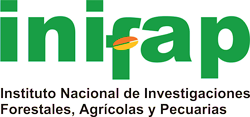Conservation status of eleven wild bean (Phaseolus spp. Fabaceae) species in northeastern Mexico
DOI:
https://doi.org/10.29312/remexca.v10i2.1475Keywords:
erosión genética, especies en peligro de extinción, frijol silvestre, mejoramiento de frijol, noreste de MéxicoAbstract
Rare and endemic plants, such as the wild species of Phaseolus (Fabaceae) in northeastern Mexico, deserve high priority in conservation efforts because of their uniqueness and usefulness as plant genetic resource. This is particularly important because during the last decades, some of these species have become endangered because of anthropogenic and natural factors. The study aimed to determine the current conservation status of 11 reported wild bean species in northeastern Mexico, using wild bean data from 77 expeditions to the states of Nuevo León and Tamaulipas during the period 1869-2013.The conservation status of the different species was determined according to the Official Mexican Standard NOM-059-SEMARNAT-2010. The categories of risk were based on four indicators: amplitude of distribution, habitat status, biological vulnerability and impact of human activity. The following eight wild Phaseolus species are not at risk of extinction: P. albiflorus, P. glabellus, P. leptostachyus, P. maculatifolius, P. neglectus, P. pedicellatus, P. vulgaris and P. zimapanensis. On the other hand, P. altimontanus Freytag & Debouck is categorized as threatened; P. novoleonensis Debouck, in danger of extinction; and P. plagiocylix Harms, possibly extinct. Current in situ and ex situ conservation programs need to be strengthened and expanded for the medium- and long-term protection of wild bean species in northeastern Mexico.
Downloads
Downloads
Published
How to Cite
Issue
Section
License
The authors who publish in Revista Mexicana de Ciencias Agrícolas accept the following conditions:
In accordance with copyright laws, Revista Mexicana de Ciencias Agrícolas recognizes and respects the authors’ moral right and ownership of property rights which will be transferred to the journal for dissemination in open access. Invariably, all the authors have to sign a letter of transfer of property rights and of originality of the article to Instituto Nacional de Investigaciones Forestales, Agrícolas y Pecuarias (INIFAP) [National Institute of Forestry, Agricultural and Livestock Research]. The author(s) must pay a fee for the reception of articles before proceeding to editorial review.
All the texts published by Revista Mexicana de Ciencias Agrícolas —with no exception— are distributed under a Creative Commons License Attribution-NonCommercial 4.0 International (CC BY-NC 4.0), which allows third parties to use the publication as long as the work’s authorship and its first publication in this journal are mentioned.
The author(s) can enter into independent and additional contractual agreements for the nonexclusive distribution of the version of the article published in Revista Mexicana de Ciencias Agrícolas (for example include it into an institutional repository or publish it in a book) as long as it is clearly and explicitly indicated that the work was published for the first time in Revista Mexicana de Ciencias Agrícolas.
For all the above, the authors shall send the Letter-transfer of Property Rights for the first publication duly filled in and signed by the author(s). This form must be sent as a PDF file to: revista_atm@yahoo.com.mx; cienciasagricola@inifap.gob.mx; remexca2017@gmail.
This work is licensed under a Creative Commons Attribution-Noncommercial 4.0 International license.



